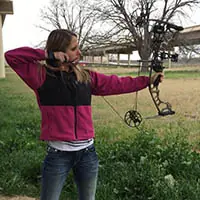What Do Shoe Fitters Look For?
According to Cragg, humans were not designed to wear shoes—our bodies find it highly unnatural. A shoe analysis is meant to find a shoe that minimizes the unnatural effects of having a product on your foot.
The first thing many shoe fitters will do is look at how you move without any product on your foot. They will then try to mimic that movement after introducing a shoe.
When you walk or run barefoot, your foot strike generally falls into three main categories: pronation (rolling inward), supination (rolling outward) or neutral (neither rolling inward nor outward—you're basically perfect). A little bit of pronation is normal, says Mitch Decker, manager of Run On! Dallas' Mockingbird Ln. location. It's too much pronation (or supination, for that matter) that causes issues.
Excessive foot rolling in either direction can lead to injuries on more than just your feet. Your hips will follow the lines of your feet and knees, meaning that if your feet are on an unstable base, your hips and knees can also be improperly aligned.
A shoe fitter might also have you stand on one foot to test your foot and ankle strength, or they might examine the tread wear patterns on your old running shoes to learn more about your current gait. If there is more wear on the inside of the shoe, you are likely an overpronator. Conversely, if the outside of the shoe is more worn, you are probably a supinator.
Whichever category you fall into gives the shoe fitter a place to start when suggesting a shoe.
How to Find the Right Shoe
A sight analysis from a running shoe specialist is more objective than a true gait analysis, so it's important to know the qualifications of the person who's fitting you.
While there isn't an industry standard to become a shoe fitter, some stores require their employees to go through their own training and certification programs. Luke's Locker, for example, created a yearlong training and certification program that each shoe fitter must renew regularly.
To ensure that you are fitted to the right shoe, you'll want to go to a specialty running store with experienced shoe fitters who have been extensively trained to perform shoe analyses.
It is also beneficial to find a store that has a "love it or return it" policy. These policies will allow you to run in the shoe for a week or two and, if the shoe isn't the perfect fit, return it to the store for a refitting.
Why Should You Get a Shoe Analysis?
One of the most important goals to remember when buying new shoes is building a strong foundation from the ground up. Much of your body will follow what your feet do, so it's crucial to have a good base.
Cragg likes to compare running in the wrong shoe to wearing the wrong prescription eyeglasses or contacts. Incorrect eye prescriptions can lead to blurry vision, headaches, vertigo and more.
If you apply this idea to wearing the wrong pair of running shoes, it's easy to see where it can lead. While your body might adapt to the wrong pair of shoes, it won't be moving naturally, leaving you at a higher risk for injury.
While it's true the right shoe can help keep injuries at bay, you'll see the most impact on those final miles of a long run. When your body is tired, your core fatigues and your form—and therefore your gait—is more likely to change. Having the right shoe to support a breakdown of form can help in pushing you through those last couple of miles.


